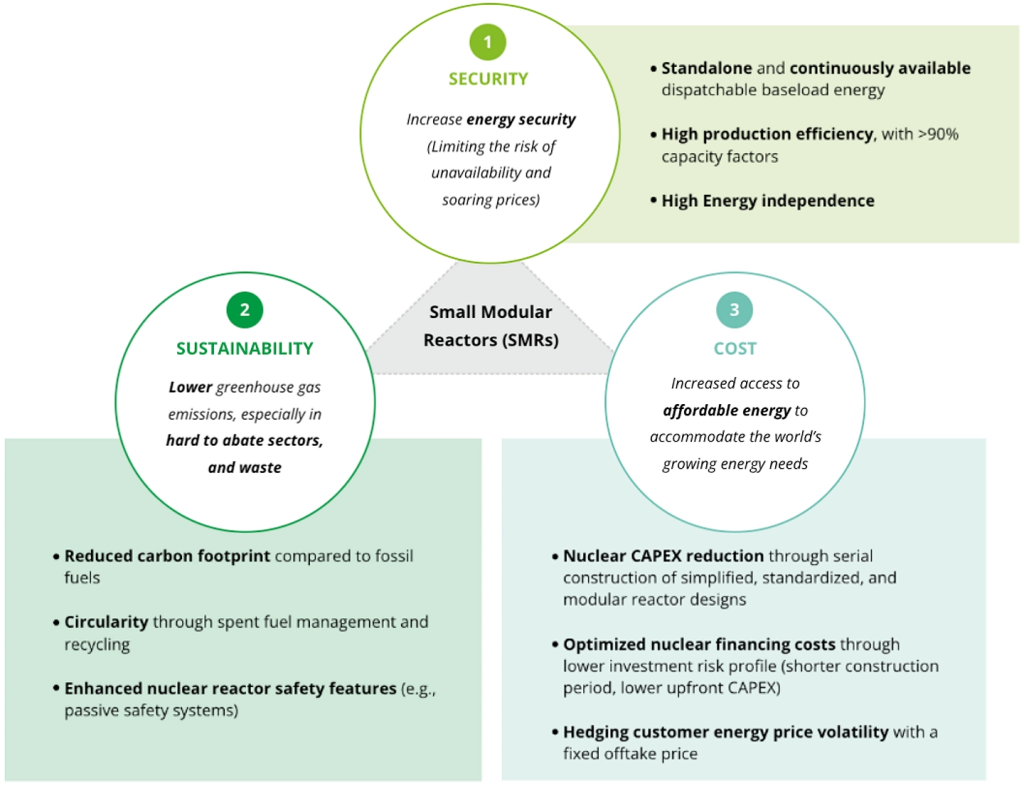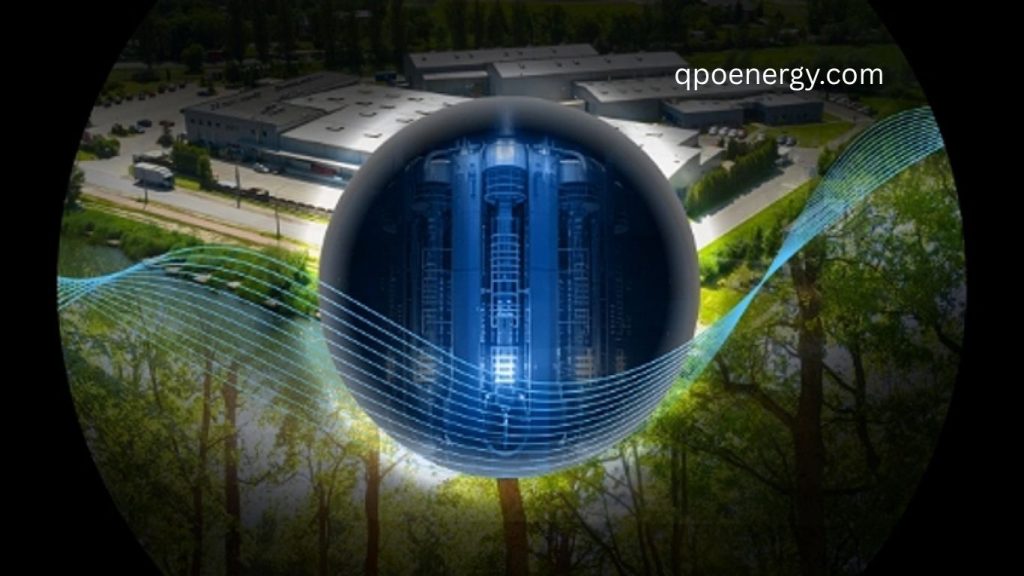Nuclear technology has powered industries for decades, but only recently has the world truly recognized its role as a cornerstone of the clean energy transition. With the urgency of climate change intensifying, nuclear energy is increasingly viewed as indispensable for reaching net-zero carbon emissions. At COP28, nearly 200 nations formally acknowledged nuclear as a low-carbon solution, a historic milestone and the first such recognition since climate conferences began in 1995. This global consensus signals a turning point: nuclear energy is no longer a quiet option—it is central to building a sustainable future.
Why Nuclear Energy is Critical for Net Zero
Achieving net-zero emissions requires balancing the energy trilemma—three interconnected priorities that determine the success of the transition:
- Energy Security: Power must be reliable and available around the clock.
- Environmental Sustainability: Electricity generation must minimize greenhouse gas emissions.
- Affordability: Energy should remain accessible for industries and households to sustain economic stability.
Solving this trilemma is far from simple. Advances in one area often create challenges in another. For example, while renewable energy like wind and solar is low-carbon and increasingly affordable, their intermittent nature raises risks to grid stability, potentially undermining energy security.
This is where nuclear energy stands apart. Unlike intermittent sources, nuclear plants generate consistent, round-the-clock power. At the same time, their lifecycle carbon footprint—from mining uranium to decommissioning plants—is among the lowest of all energy sources. Nuclear also demands less land per megawatt-hour compared to solar and wind, reducing environmental impact. These attributes make nuclear a powerful partner to renewables, ensuring both reliability and sustainability in the clean energy mix.
The Rise of Small Modular Reactors (SMRs)
The next chapter of nuclear’s story lies in Small Modular Reactors (SMRs). Unlike traditional large-scale plants, SMRs are designed as compact units that can be manufactured in factories and transported for on-site assembly. This approach reduces construction time and cost—two of the most persistent challenges in nuclear energy.

SMRs also incorporate cutting-edge safety technologies. Their smaller size allows for passive safety features, meaning the reactors can shut down safely without human intervention or external power. This makes them inherently safer and more adaptable to diverse energy needs.
Beyond electricity, SMRs can provide carbon-free heat for industrial processes and urban heating networks, supporting decarbonization beyond the power sector. Their flexibility makes them a potential game-changer in addressing the energy trilemma.
Global Momentum: Designs and Deployment
Worldwide, innovation in SMRs is accelerating. More than 150 SMR designs are currently under development across multiple countries, reflecting strong global interest in this technology. However, industry experts estimate that fewer than 15 of these designs will achieve full commercial maturity by 2045.
This indicates both the opportunity and the challenge: while SMRs hold promise, only the most robust and scalable models will thrive. Competition is intense, and the race to lead this emerging market is already underway.
Key Success Factors for SMRs
For SMRs to scale and fulfill their potential, several conditions must be met:

Access to Financing
The deployment of SMRs requires massive upfront investment. Whether through public subsidies, bank loans, stock market listings, or private equity, financing must be made more accessible. Stable financial frameworks will reduce investor risk and accelerate development.
Harmonized Safety Standards
Currently, nuclear safety regulations vary significantly between countries. Harmonizing these standards will not only improve efficiency in design approvals but also lower costs and facilitate international deployment.
Public Acceptance
Public opinion remains one of the greatest hurdles for nuclear expansion. Historical concerns about safety, waste, and past accidents fuel skepticism. For SMRs to succeed, governments and companies must foster transparency, engage communities, and demonstrate the technology’s safety and environmental benefits.
Resilient Value Chains
A complete end-to-end value chain—from uranium mining and fuel fabrication to waste management—must be secured. With growing geopolitical tensions affecting supply chains, resilience is essential to prevent delays and cost overruns.
Opportunities of SMRs
If these challenges are addressed, the opportunities for SMRs are enormous:
- Energy Security: SMRs provide stable baseload power, reducing dependence on fossil fuels and variable renewables.
- Climate Action: Their low-carbon output supports decarbonization in sectors beyond electricity, such as industrial heat and hydrogen production.
- Economic Growth: By lowering costs and construction times, SMRs can open nuclear energy to markets that could not previously afford large reactors.
- Global Reach: Smaller units are ideal for countries with limited grids, isolated communities, or developing regions where large nuclear plants are impractical.
Challenges on the Horizon
Despite the potential, the path forward is not without obstacles. High initial costs, lengthy regulatory processes, and uncertainty around waste management continue to challenge nuclear deployment. Additionally, competition from renewables and emerging storage technologies could limit SMRs’ market share if innovation stalls.
Nevertheless, by combining nuclear’s reliability with renewable energy’s scalability, SMRs can help shape a resilient, diversified energy system. Their success will depend on collaboration between governments, industry leaders, and communities to create an enabling ecosystem.
Frequently Asked Questions:
What are Small Modular Reactors (SMRs)?
Small Modular Reactors are advanced nuclear power plants built in smaller units compared to traditional reactors. They are factory-manufactured, easily transported, and assembled on-site, offering faster construction, lower costs, and enhanced safety features.
How do SMRs differ from traditional nuclear reactors?
Traditional reactors are large, expensive, and take years to build, while SMRs are compact, modular, and designed for scalability. They also incorporate modern safety systems that make them more efficient and adaptable.
Why are SMRs considered important for the clean energy transition?
SMRs provide reliable, low-carbon electricity around the clock, helping stabilize grids that rely on intermittent renewable sources like solar and wind. Their role is vital in achieving net-zero emission goals.
Are Small Modular Reactors safe?
Yes. SMRs are designed with advanced passive safety systems, meaning they can automatically shut down in emergencies without human intervention. Their smaller size also makes them easier to manage and monitor.
What industries can benefit from SMRs?
Apart from electricity generation, SMRs can supply clean heat for industrial processes, hydrogen production, and urban heating systems. They can also serve remote regions where large reactors are impractical.
How many SMR designs are currently being developed?
Globally, more than 150 SMR designs are under development, but experts predict fewer than 15 will reach full commercial maturity by 2045.
What are the main challenges facing SMRs?
The biggest challenges include high initial costs, regulatory complexities, public acceptance, and securing end-to-end value chains for fuel supply and waste management.
Conclusion
Small Modular Reactors are no longer just an experimental concept—they represent a practical, scalable, and sustainable solution to today’s most pressing energy challenges. By combining nuclear’s reliability with renewable energy’s flexibility, SMRs address the energy trilemma of security, sustainability, and affordability in ways few technologies can. The road ahead requires coordinated policies, financing, transparent regulation, and public trust. If these challenges are met, SMRs will not only accelerate the global shift to net-zero emissions but also transform how nations power their industries, cities, and communities.


